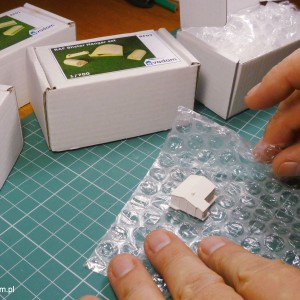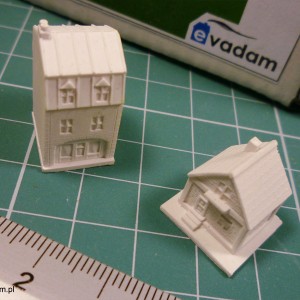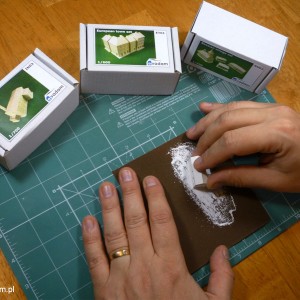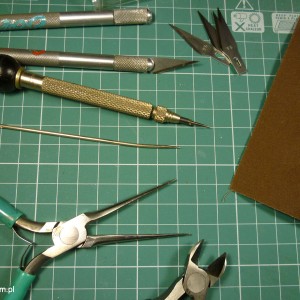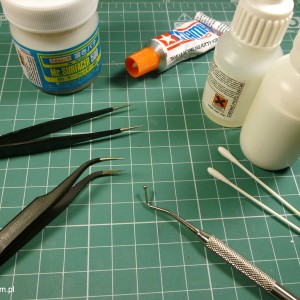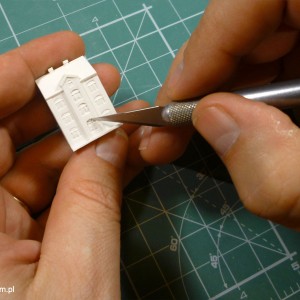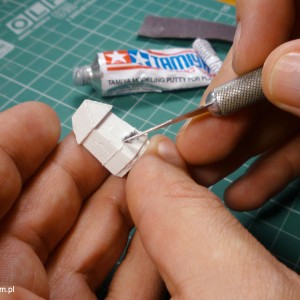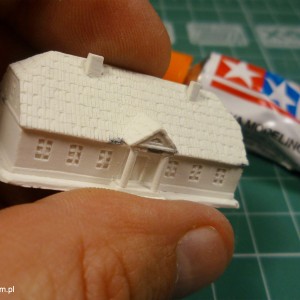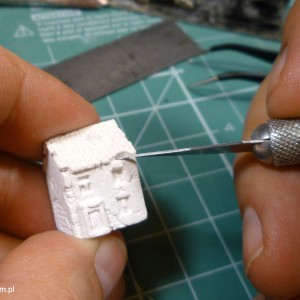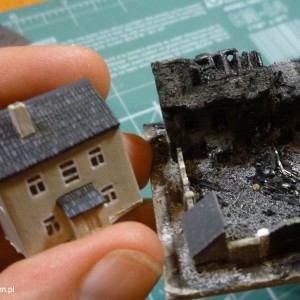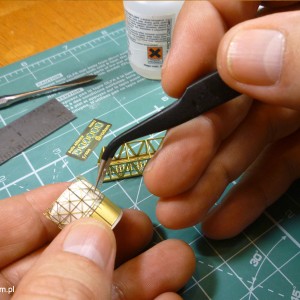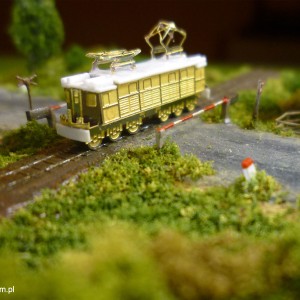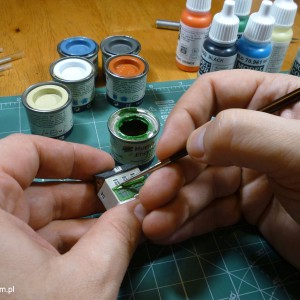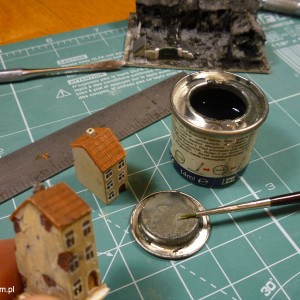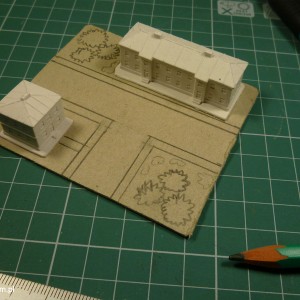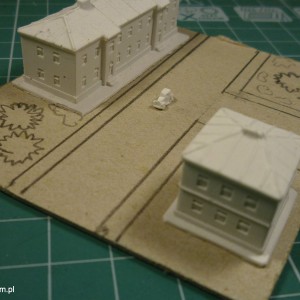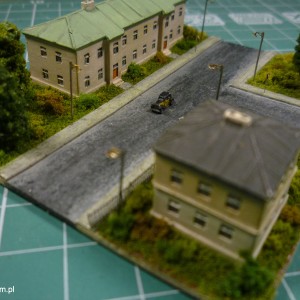ATTENTION: Many sets include minuscule components, frequently fragile and/or easily damaged. Open your boxes with caution to avoid loss or damage.
– Modeling knives with different blade shapes,
– Pincers,
– Abrasive paper (different grades),
– Modeling putty,
– Polyvinyl resin and cyanoacrylic glue (for gypsum and photo etched components, respectively).
HINT: Don’t throw out any dull or broken knifes or spikes. They can be invaluable when modifying or ageing your developments.
HINT: Sometimes leaving micro-damage is good. A chipped-off piece of stone wall or several broken shingles will make your dioramas more realistic once you paint them.
HINT: “Practice” ageing on the bottom surface of the plinth to get a feel to how gypsum paste behaves. When modeling bricks the optimum way is to run your graver along a metal ruler.
HINT: Gypsum paste surfaces are more absorbent, and yet it behaves like plastic or metal. Our offer will include a growing share of photo etched accessories. You can take a look at some in our Gallery.
HINT: We suggest you test you paints on the bottom surface of the plinth. You can try engraving or scratching the surface to check how the paint of your choice will behave. The best solution is to let every coat of paint dry to avoid rubbing off on edges.
When it comes to final assembly we suggest that you develop your diorama only after the individual components have been painted. Once they are arranged (often as not close to one another) access to some details may prove difficult if not impossible. Base colors are frequently enough – once you “plant” your greenery you can make final color corrections by glazing, washing or drybrushing.
HINT: Our buildings are best attached to their base with polyvinyl resin glue – it is simple to use and flexible when dry. Bear in mind that our plinths absorb moisture easily, however: glue becomes “dry” fast after application. To prevent that effect, “water” the adhesion surface several times before applying glue.


